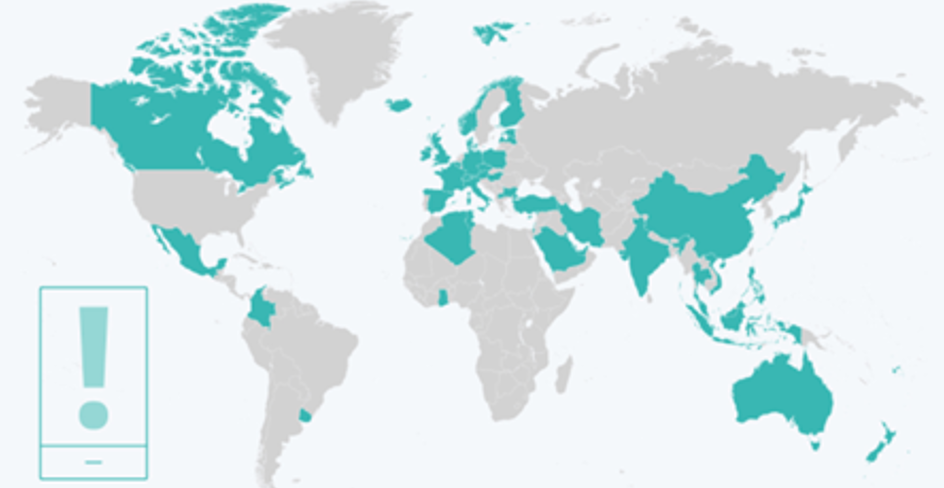
(C) Naomi Korn Associates & Mathys & Squire 2022. Some Rights Reserved. These case studies are licensed for reuse under the terms of a Creative Commons Attribution Share Alike Licence.
The following case study has been taken from the “Implications of Covid-19 on SMEs – reassessing the role of IP in multiple sectors and industries” report written by Naomi Korn Associates and Mathys & Squire Consulting, November 2021. This case study reviews the impact on SMEs (small, medium enterprises) of the COVID-19 pandemic since its appearance in early 2020 through the first quarter of 2021. It focuses on the industries most affected by the crisis and whether intellectual property (IP) and IP management may have helped mitigate its impact through adaptation and change.
Sector overview
One of the few areas of significant growth during the COVID-19 pandemic has been the software industry. Indeed the development of contract tracing applications is wholly due to the crises, with, and indicated below, many countries globally deploying contact tracing software, to varying levels of success.

Figure 4 Which Countries Are Deploying Coronavirus Tracing Apps? Source: MIT Technology Reviews / Statista.
Recent reports have suggested that even at low levels of use such apps may make significant contributions in the fights against COVID-19. Simulations looking at notifications systems estimated that with up to 75% using a suitable contact tracing app, deaths could be reduced by up to 78% and infections by 81%, while a lower uptake of 15% would still result in 12% fewer deaths and 15% fewer infections.
Many of the companies developing these contact tracing software solutions have been SMEs. A success story in this context has been an Irish based software development company NearForm. The company was originally contracted to build the “Covid Tracker Ireland” application by the Irish government. Following initial development, the company began working with Apple and Google in mid-2020 to access the Exposure Notification System that both companies had developed, allowing the app to work while guaranteeing user anonymity. The technology works by exchanging an anonymised key code between the mobile phones of two people in close proximity. If one of them becomes infected, they update their status on the app. The next step can be centralised or decentralised. Under the decentralised option, the phone provides its own anonymised ID to a centralised database. The phone then downloads the database, does contact matching, risk analysis and alerts the user if required. Under a centralised option the phone sends its own anonymised ID plus other codes gathered from other phones to a centralised database, which then does contract tracing, risks analysis and alerting if required.
The company has developed similar systems in Northern Ireland, Scotland and several US states including New York. This work offers a significant boost for the company both in terms of revenues and reputation. Close management and protection of their IP forms an important aspect of this successful business model. By protecting the copyright in their code, NearForm can release the application source-code available under a permissive MIT license, which is a free permissive software license type originating at MIT. At the same time, they offer additional services, like consultancy, training and bespoke digital product development for which they charge. This business model is not unusual across the development of digital products, but it can only be facilitated by identification, close management and protection of important IP.
Video conferencing software has benefited from an explosive growth in users during the pandemic. The video conferencing tool Zoom, which had limited use prior to the pandemic saw its use explode by almost 40% in the initial weeks of March 2020 as millions of people worldwide faced lockdowns and were required to work remotely or from home. With localised lockdowns firmly in place, people not only use Zoom or similar platforms for office calls but birthday parties, office parties and even court proceedings. Similarly, another innovation to arise during the pandemic is Krisp, the AI powered app that removed background noise and echo in online meetings, leaving behind the human voice only. Due to AI-based noise filtering, all the background noise is cancelled. During the lockdown, Krisp introduced its Chrome extension, allowing users to cancel background noise during conference calls with a single button.
Whilst the NearForm and other businesses like Red Hat offer access and reuse of their software (and its code) for free, the business model used by Zoom uses licensing to create a tiered structure of uses, enabling royalty-free licenses to underpin the use of basic access to Zoom, whilst enhanced uses, such as access for longer to the platform for increased participants, attracts a charged for license. During the COVID-19 pandemic, the charged for Zoom software packages have seen a rapid increase in growth, due to the required replication of business and personal interactions in safe online spaces.
Naomi Korn Associates is one of the UK’s specialists in copyright, data protection and licensing support services.
Mathys & Squire Consulting is an intellectual property consulting team that can support all businesses in capitalising intangible assets.
Naomi Korn Associates and Mathys & Squire Consulting are working in partnership across multiple industries to provide innovative consultancy IP support services.